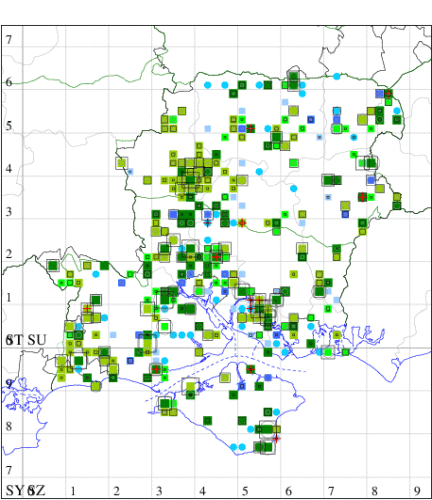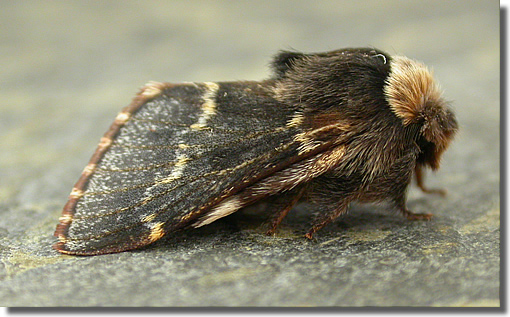December Moth
Poecilocampa populi
Checklist Number66.001 [B&F: 1631]
Verification
Record will be accepted (subject to date and location checks)
Classification
| Family: | Lasiocampidae |
| Subfamily: | Poecilicampinae |
| Genus: | Poecilocampa |
| Species: | populi |
| Authority: | (Linnaeus, 1758) |
Common in woodland, scrub, hedgerows and gardens throughout much of the British Isles. In Hampshire and on the Isle of Wight widespread and common in wooded country in the three vice-counties, but doubtless still under-recorded because of the lateness of its flight period. Wingspan male 36-38 mm, female 42-48 mm. Unmistakable: no similar species fly so late in the year. Larva feeds on many deciduous tree species, including birch, oak, hawthorn and blackthorn.


The abundance in each month is indicated as follows:
 No records
No records Very occasional
Very occasional Irregular
Irregular Uncommon
Uncommon Off-peak, but not unusual
Off-peak, but not unusual Off-peak, but not unusual
Off-peak, but not unusual Main flight time
Main flight time| J | F | M | A | M | J | J | A | S | O | N | D | |
|---|---|---|---|---|---|---|---|---|---|---|---|---|
| Adult |  |  |  |  |  |  |  |  |  |  |  |  |
| Larval |  |  |  |  |  |  |  |  |  |  |  |  |



